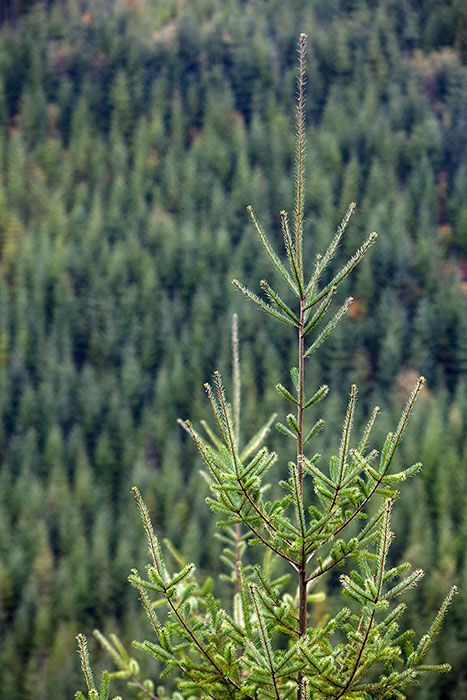The Impact of Wood Use on North American Forests
Protecting Soil and Water Quality
Soil is made up of a complex mixture of minerals, organic matter, gases, liquids and micro-organisms. It’s an obvious and essential component of forest ecosystems, providing both a base for trees, plants and organisms, and the minerals and nutrients needed for their growth. In a forest, soil is held together by the root structures of trees and plants, and protected from erosion by tree trunks, forest floor vegetation and woody and leafy debris.
In forestry (as in agriculture), soil is the base resource; the medium that supports the ecosystem. It is therefore essential that soil be protected from damage and erosion.
For example, to avoid compacting sensitive soil, foresters may use heavy equipment in the winter when the ground is frozen instead of summer when it’s soft, or use cable logging techniques instead of ground-based equipment.
Protecting against erosion is necessary, not only for the forest, but to keep soil from entering water bodies where it could be detrimental to fish habitat. Strategies involve avoiding sensitive areas (such as unstable slopes) and road construction techniques that include seeding the road with grass, creating diversion ditches and adding water bars (diagonal channels that prevent water from flowing down the length of the road).
Conserving Biodiversity
Biological diversity, or biodiversity, refers to the variety of species and ecosystems on earth and their ecological systems. An important indicator of forest sustainability, it enables organisms and ecosystems to respond to and adapt to environmental change.
Conserving biodiversity is an essential part of forest sustainability and involves strategies at different scales.
At the landscape level, networks of parks and protected areas conserve a range of biologically and ecologically diverse ecosystems. Tens of millions of acres of North America’s forests are protected within wilderness areas and parks and through regional and local programs. Forests with special ecological attributes are also protected by established conservation easements developed through the work of local land trusts.14
From a forest management perspective, conserving biodiversity involves strategies that create a diversity of ecosystem conditions through space and time, to provide diverse habitat for native species of plants and animals across the landscape. Among other things, this may include selecting harvest, renewal and tending treatments that maintain existing tree species diversity, maintaining mapped areas of standing trees within a harvested site, or planning harvest patterns based on wildlife habitat management objectives.
Challenging Preconceptions
This course has touched on a variety of criteria for forest sustainability. Another is public discourse. Frank discussion regarding the status of North American forests, how they’re managed and the challenges they face is necessary to maintaining the many values they provide. In that spirit, this section addresses some of the most common concerns about forests and the forest industry.
True or false: Leaving the forest alone has the greatest climate change benefit
False. There is growing awareness among building designers that using wood can reduce a building’s carbon footprint, provided it comes from a sustainably managed forest. At the core of wood’s carbon benefit is the fact that as trees grow they absorb carbon dioxide (CO2) from the atmosphere, release the oxygen (O2) and incorporate the carbon into their wood, leaves or needles, roots and surrounding soil. Young, vigorously growing trees take up carbon quickly, with the rate slowing as they reach maturity (typically 60-100 years, depending on species and environmental factors).










